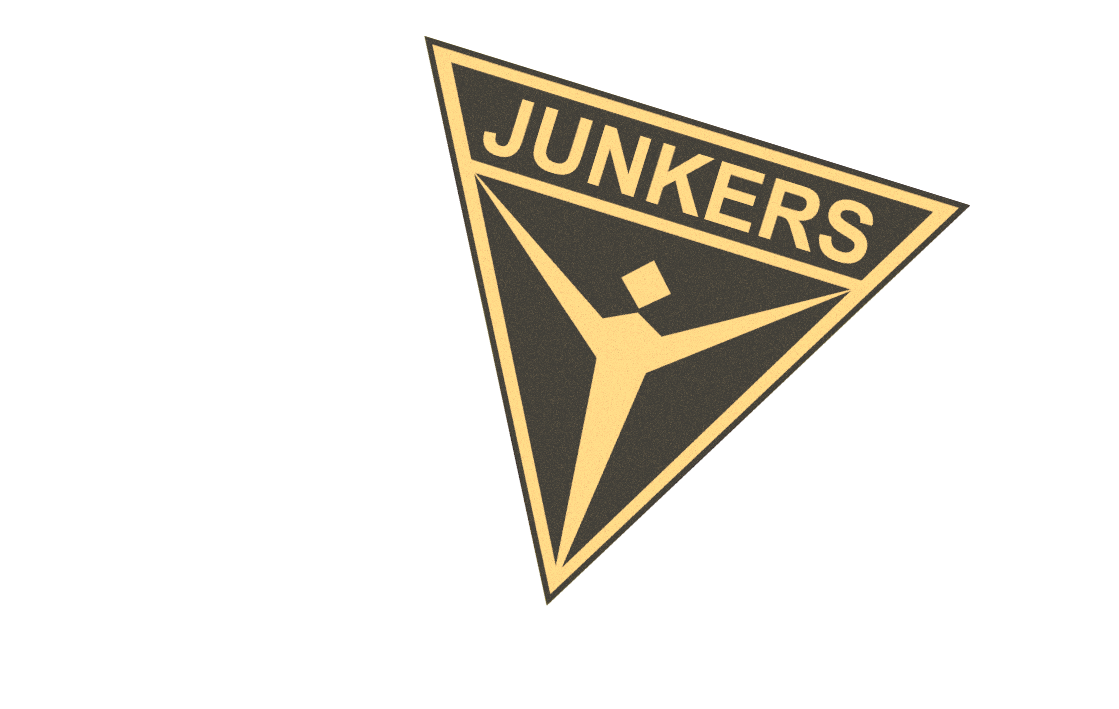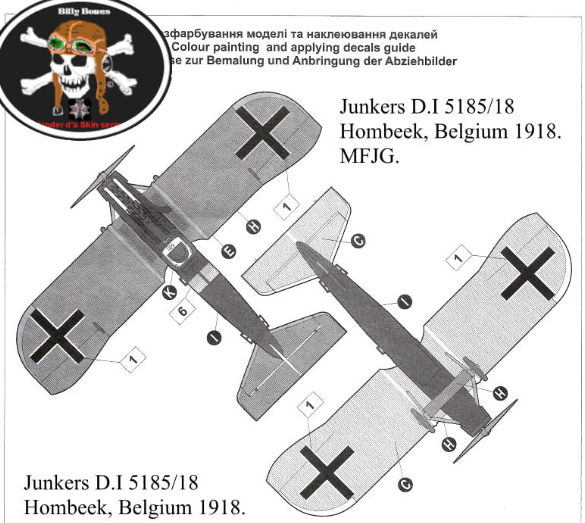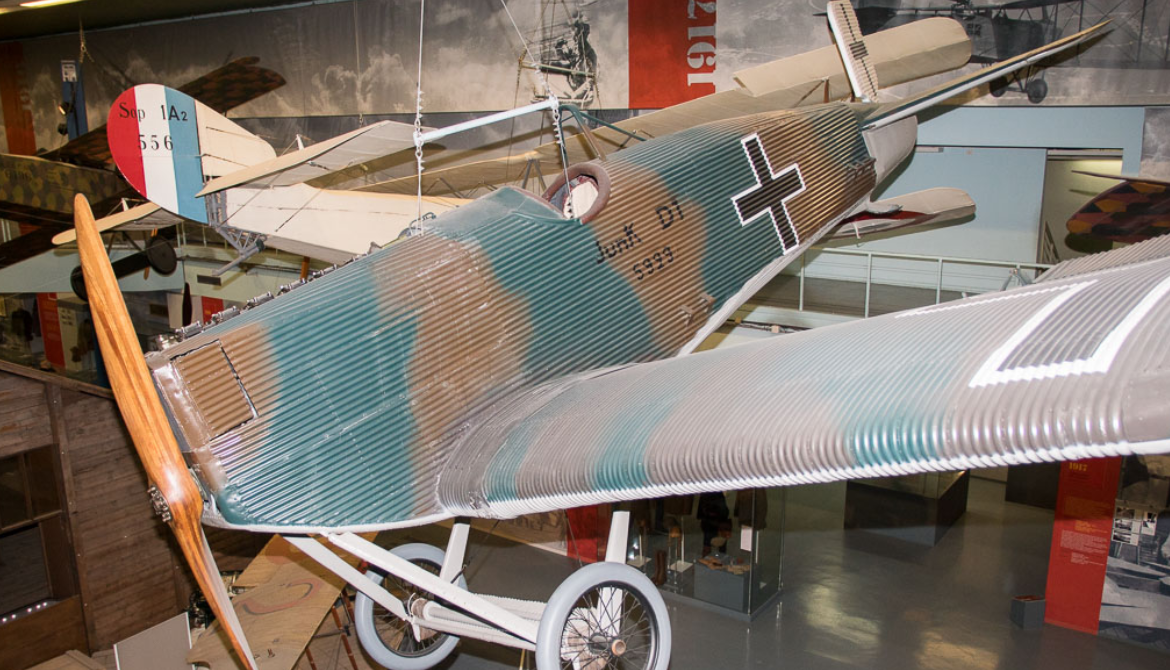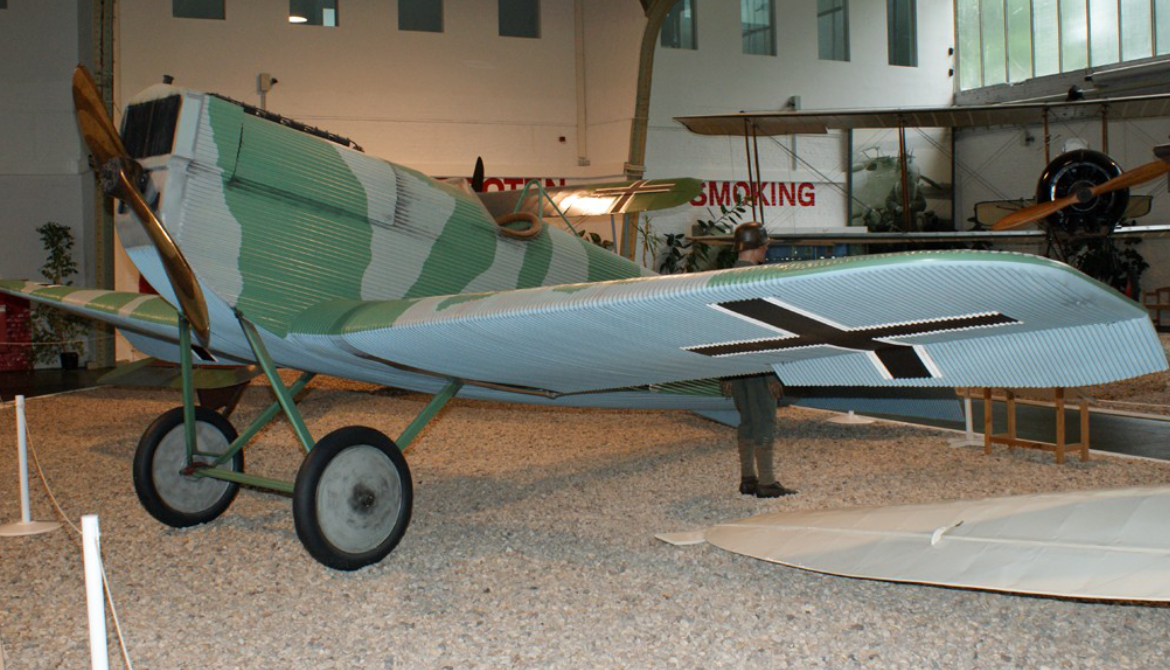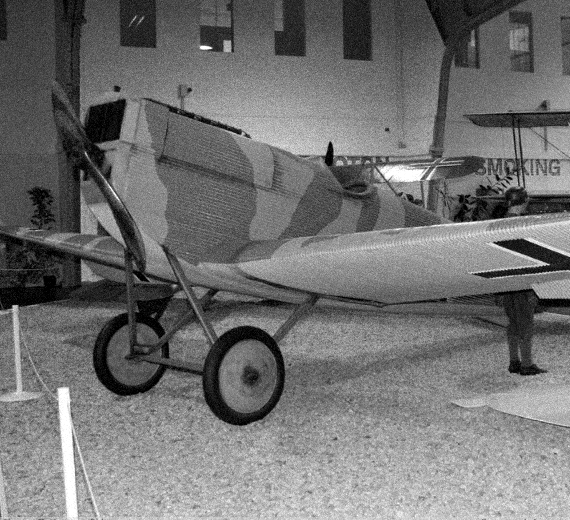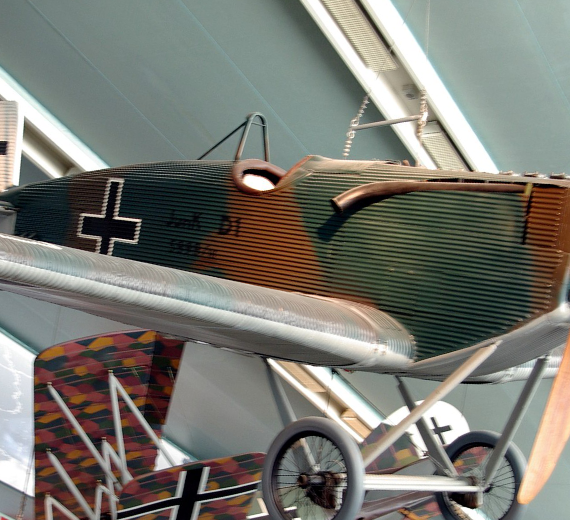Junkers D.I (factory designation J 9)
 |
|
| Junkers D.I survivor at Musée de l'Air et de l'Espace | |
| Role | Fighter |
|---|---|
National origin Germany
Manufacturer Junkers
Designer Hugo Junkers
First flight 17 September 1917
Introduction 1918
Status retired
Primary user Imperial German Navy
Produced 1918
Number built 41
.
History Junkers Flugzeug- und Motorenwerke AG JFM
Junkers D.I (factory designation J 9)
First Flight 17 September 1917
Introduction 1918

The Junkers D.I (factory designation J 9) was a monoplane fighter aircraft produced in Germany late in World War I, significant for becoming the first all-metal fighter to enter service.
The prototype, a private venture by Junkers named the J 7, first flew on 17 September 1917, going through nearly a half-dozen detail changes in its design during its tests. When it was demonstrated to the Idflieg early the following year it proved impressive enough to result in an order for three additional aircraft for trials. The changes made by Junkers were significant enough for the firm to rename the next example the J 9, which was supplied to the Idflieg instead of the three J 7s ordered.
Design

The Junkers D.I (factory designation J 9) was a monoplane fighter aircraft produced in Germany late in World War I, significant for becoming the first all-metal fighter to enter service. The prototype, a private venture by Junkers named the J 7, first flew on 17 September 1917, going through nearly a half-dozen detail changes in its design during its tests. When it was demonstrated to the Idflieg early the following year it proved impressive enough to result in an order for three additional aircraft for trials. The changes made by Junkers were significant enough for the firm to rename the next example the J 9, which was supplied to the Idflieg instead of the three J 7s ordered.
Variants
- J 7
- company designation for early prototype variants, one built (three completed as J 9s).
- J 9
- company designation for late prototypes and production models
- J 9/II
- company designation for lengthened fuselage version
- D.I
- Idflieg designation

0
KmCeiling
0
HrEndurance
0
Km/hAircraft Speed
0
Max Crew
Photo Gallery
Junkers Flugzeug- und Motorenwerke AG JFM
Junkers D.I (factory designation J 9)


Junkers Flugzeug- und Motorenwerke AG JFM
Junkers D.I (factory designation J 9)
General Info
-
-
- Crew: One pilot
- Length: 7.25 m (23 ft 9.4 in)
- Wingspan: 9.00 m (29 ft 6.3 in)
- Height: 2.60 m (8 ft 6 in)
-
Powerplant
-
-
- Empty weight: 654 kg (1,438 lb)
- Gross weight: 834 kg (1,834 lb)
- Powerplant: 1 × BMW IIIa water-cooled 6-cylinder inline , 138 kW (185 hp)
-
Performance
- Maximum speed: 176 km/h (109 mph, 95 kn)
- Endurance: 1.5 hours
- Service ceiling: 6,000 m (19,700 ft)
- Rate of climb: 3.5 m/s (683 ft/min)
Links to Youtube & Others
The Junkers D.I (factory designation J 9) was a monoplane fighter aircraft produced in Germany late in World War I, significant for becoming the first all-metal fighter to enter service.
Junkers D.I (factory designation J 9)
The Junkers D.I (factory designation J 9) was a monoplane fighter aircraft produced in Germany late in World War I, significant for becoming the first all-metal fighter to enter service.
Youtube Link
One example survives and is on display in the Musée de l'Air et de l'Espace, at the Paris–Le Bourget Airport, 11km north of Paris, France..
